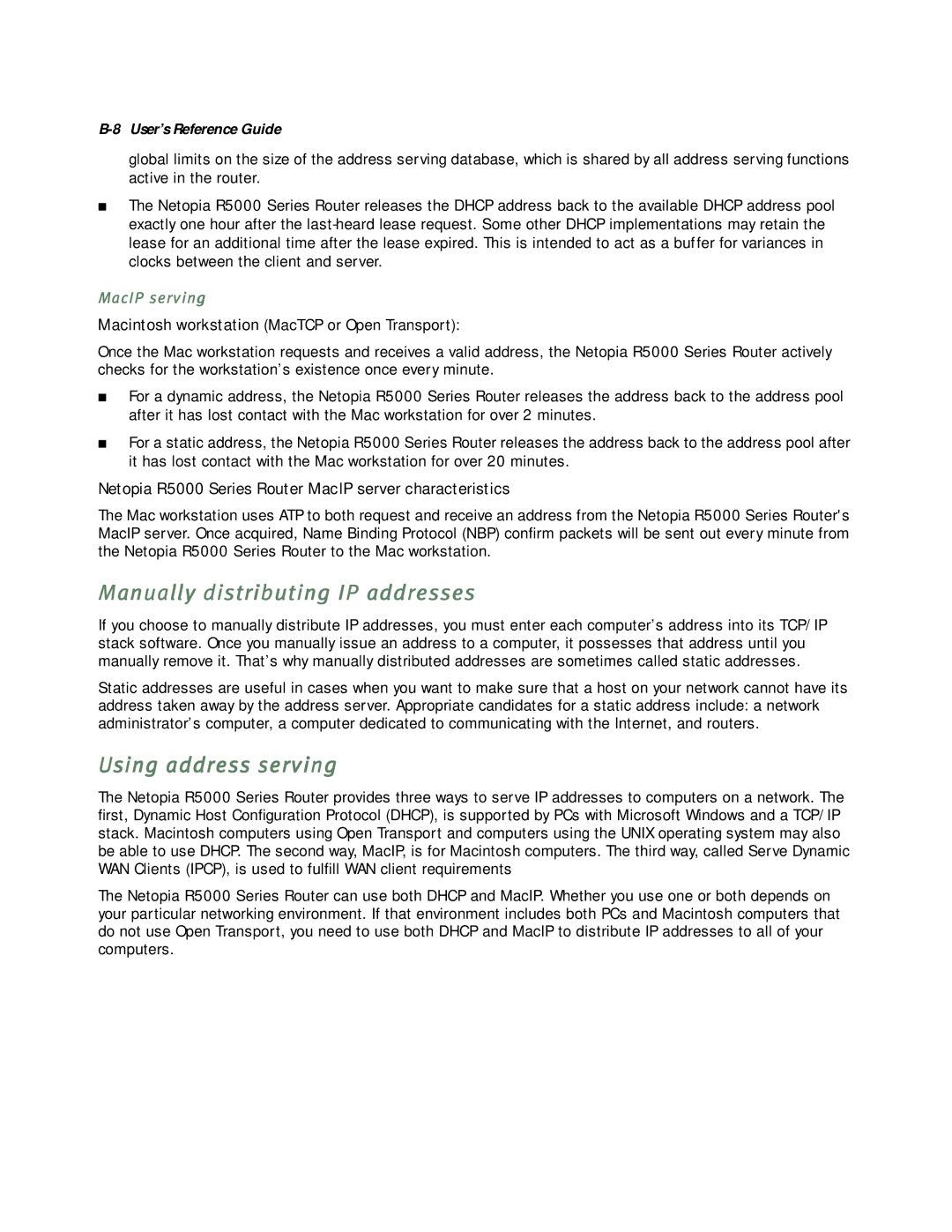B-8 User’s Reference Guide
global limits on the size of the address serving database, which is shared by all address serving functions active in the router.
■The Netopia R5000 Series Router releases the DHCP address back to the available DHCP address pool exactly one hour after the
MacIP serving
Macintosh workstation (MacTCP or Open Transport):
Once the Mac workstation requests and receives a valid address, the Netopia R5000 Series Router actively checks for the workstation’s existence once every minute.
■For a dynamic address, the Netopia R5000 Series Router releases the address back to the address pool after it has lost contact with the Mac workstation for over 2 minutes.
■For a static address, the Netopia R5000 Series Router releases the address back to the address pool after it has lost contact with the Mac workstation for over 20 minutes.
Netopia R5000 Series Router MacIP server characteristics
The Mac workstation uses ATP to both request and receive an address from the Netopia R5000 Series Router's MacIP server. Once acquired, Name Binding Protocol (NBP) confirm packets will be sent out every minute from the Netopia R5000 Series Router to the Mac workstation.
Manually distributing IP addresses
If you choose to manually distribute IP addresses, you must enter each computer’s address into its TCP/IP stack software. Once you manually issue an address to a computer, it possesses that address until you manually remove it. That’s why manually distributed addresses are sometimes called static addresses.
Static addresses are useful in cases when you want to make sure that a host on your network cannot have its address taken away by the address server. Appropriate candidates for a static address include: a network administrator’s computer, a computer dedicated to communicating with the Internet, and routers.
Using address serving
The Netopia R5000 Series Router provides three ways to serve IP addresses to computers on a network. The first, Dynamic Host Configuration Protocol (DHCP), is supported by PCs with Microsoft Windows and a TCP/IP stack. Macintosh computers using Open Transport and computers using the UNIX operating system may also be able to use DHCP. The second way, MacIP, is for Macintosh computers. The third way, called Serve Dynamic WAN Clients (IPCP), is used to fulfill WAN client requirements
The Netopia R5000 Series Router can use both DHCP and MacIP. Whether you use one or both depends on your particular networking environment. If that environment includes both PCs and Macintosh computers that do not use Open Transport, you need to use both DHCP and MacIP to distribute IP addresses to all of your computers.
